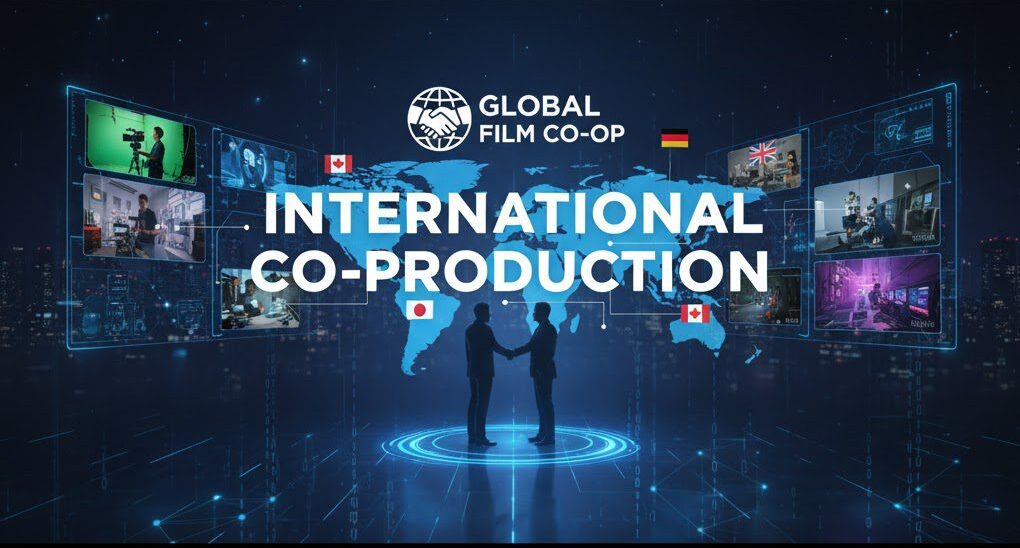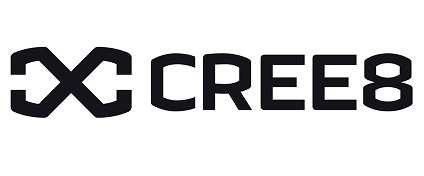International Co-Production: The Strategic Imperative for Content Financing and Global Reach

Introduction
In the highly capitalized and risk-intensive landscape of modern film and television, the era of a single studio fully financing a tentpole project is giving way to smart, shared investment models.
The most critical of these is International Co-Production—a strategic joint venture between two or more production companies from different countries to create content.
This is not simply a funding mechanism; it is an essential business architecture that allows content creators and investors to pool financial resources, mitigate individual risk, access critical government subsidies, and guarantee distribution across multiple global markets.
For a senior M&E executive, mastering the legal and logistical complexities of Int
Table of content
- The Strategic Benefits of International Co-Production
- The Two Core Models: Official vs. Unofficial Co-Productions
- Operational Challenges and Mitigation in Co-Production
- Structuring the Deal: Key Elements of Co-Production Agreements
- How Vitrina Transforms the Co-Production Partner Search
- Conclusion
- Frequently Asked Questions
Key Takeaways
| Core Challenge | The need for large budgets, minimized financial risk, and guaranteed access to diverse international distribution markets. |
| Strategic Solution | Entering data-verified co-production agreements to pool capital, qualify for dual-territory incentives, and secure national status in partner countries. |
| Vitrina’s Role | Vitrina’s platform tracks over 50,000 active projects and the verified track records of over 300,000 companies to identify, vet, and connect optimal co-production partners globally. |
The Strategic Benefits of International Co-Production
The decision to pursue International Co-Production is driven by clear financial and market-access advantages that cannot be achieved through single-territory production or simple licensing deals.
1. Accessing Finance, Subsidies, and Tax Incentives
This is often the single most important factor. Co-productions allow partners to pool financial resources, but more crucially, they provide a legitimate pathway to access government financial assistance, grants, and tax concessions in each partner country.
When a project qualifies as a “national production” in multiple jurisdictions (as in the case of official treaty co-productions), it gains eligibility for multiple funding streams, dramatically reducing the financial burden and risk for any single party.
2. Expanding Market Reach and Distribution
Co-production inherently secures a built-in distribution network. By partnering with a company in a foreign territory, the project gains immediate access to that partner’s local market, distribution channels, and audience base.
This enhances the film or show’s promotion, often qualifies it for local content quotas, and positions the content for global recognition—as seen in acclaimed projects like The Shape of Water, which successfully combined U.S. and Mexican talent, according to reporting on international film collaborations.
3. Mitigating Risk and Enhancing Quality
By sharing the financial and logistical risk, a co-production insulates partners from single-market fluctuations or project cost overruns. Furthermore, the combined creative and technical expertise from diverse markets often elevates the production quality.
Producers can tap into broader talent pools—accessing specialized VFX artists in one country and world-class sound facilities in another—resulting in a more ambitious and high-quality final product.
Executives looking for pre-vetted co-production partners can utilize intelligence platforms for streamlined sourcing, which is critical for development and pre-production.
The Two Core Models: Official vs. Unofficial Co-Productions
The legal and financial structure of an International Co-Production determines the benefits a project can claim. The two primary models serve distinct strategic goals:
1. Official (Treaty) Co-Productions
- Structure: Governed by bilateral treaties or agreements between two or more countries (e.g., Canada-France, India-Australia).
- Primary Benefit: The content is recognized as a national production in all partner countries. This is the only path to accessing country-specific government subsidies, tax credits, and local content quotas.
- Requirements: Treaty co-productions have strict rules regarding the financial contribution (often between 20% to 80% for each partner), and mandatory minimum levels of creative and technical contributions (cast, crew, post-production spend) from each partner country. The complexity lies in meeting dual or triple sets of legal and creative requirements.
2. Unofficial (Contractual/Creative) Co-Productions
- Structure: A commercial joint venture built solely on contractual agreements between the production companies.
- Primary Benefit: Offers greater flexibility in creative control, financing structures, and partner composition. They are easier to execute quickly and can combine resources outside of government frameworks.
- Requirements: These arrangements rely on private equity, market pre-sales, and private sponsorship. They do not qualify for official treaty benefits but still allow for the pooling of private financing, shared crews, and access to international market resources.
The Strategic Choice: While official treaties offer the highest financial incentive, non-treaty agreements offer speed and flexibility, making the choice dependent on the project’s budget, creative needs, and the availability of specific tax breaks.
Operational Challenges and Mitigation in Co-Production
The very nature of cross-border collaboration introduces friction points that must be managed with precise, data-backed planning.
- Legal and Bureaucratic Differences: Varying tax laws, labor regulations, and intellectual property rights across jurisdictions can create significant legal pitfalls.
- Mitigation: Insist on local legal counsel with specialized experience in multi-territory production. Vet potential partners based on a proven track record of successfully navigating these complex legal frameworks.
- Cultural and Creative Tensions: Differing work styles, communication norms, and storytelling traditions can lead to creative conflict.
- Mitigation: Establish a clear creative language and framework from the outset. In the co-production agreement, clearly define the Majority vs.
- Minority partnership roles and set up simple dispute resolution mechanisms to ensure production momentum is maintained.
- Logistical Complexity and Currency Risk: Coordinating schedules, equipment transport, and managing cash flow across multiple currencies is challenging.
- Mitigation: A unified cash flow model and a clear currency strategy are essential. For the logistics of content delivery and final market readiness, the use of specialized tools for managing packaging and delivery across territories is crucial.
Successful International Co-Production requires meticulous planning and a deep commitment to shared creative and financial objectives.
Structuring the Deal: Key Elements of Co-Production Agreements
The Co-Production Agreement is the legal backbone of the entire venture. It must be comprehensive, sitting above standard contracts to define the shared ownership and exploitation rights. According to legal experts, the following elements are critical:
- Ownership and Copyright: Clearly specify the ownership of the resulting IP and how copyright will be allocated based on financial contributions.
- Financial Contributions and Recoupment: Define the exact funding amount (cash vs. in-kind), the currency of contribution, and the revenue waterfall—how and when each partner recoups their investment and shares in the profits. The distribution of profits is typically proportionate to the financial contribution.
- Creative and Editorial Control: Explicitly outline the decision-making process for casting, script approvals, director selection, and final delivery sign-off, often by assigning weighted votes based on majority or minority status.
- Distribution Rights and Quotas: Define the territories where each partner holds exclusive exploitation rights. In treaty co-productions, this dictates how the final product is included in a country’s broadcast or theatrical quotas.
How Vitrina Transforms the Co-Production Partner Search
Identifying the right International Co-Production partner is a high-stakes search that requires validated, transactional data—not just industry listings. Vitrina’s platform operates as the essential intelligence layer, enabling the most efficient partner discovery and due diligence.
Instead of wading through industry referrals or festival brochures, executives use Vitrina to filter the global entertainment supply chain by precise criteria: identifying production companies with active projects in the “Financing” stage, a proven track record in a specific genre (e.g., German Sci-Fi), and verified past collaboration with streamers.
This unified platform links the company profile to its full slate of delivered projects, its key decision-makers, and their current mandates, turning the complex, fragmented task of partner vetting into a clear, data-backed strategic decision.
For production and co-production executives, Vitrina’s dedicated solutions for development and pre-production are indispensable.
Conclusion
International Co-Production has become a cornerstone strategy for global content creation, enabling studios and producers to share financial risk, unlock multiple tax incentives, and secure access to diverse distribution markets.
By aligning creative vision with strategic financing and regulatory compliance, co-productions not only enhance production value but also expand a project’s cultural and commercial reach.
However, success depends on rigorous due diligence, clear contractual frameworks, and data-verified partner selection.
Platforms like Vitrina transform this process by connecting verified companies, projects, and executives in real time—empowering media leaders to finance smarter, collaborate globally, and build truly international content portfolios.
Frequently Asked Questions
The main financial advantages are the pooling of capital, the sharing of financial risk, and the ability to access government subsidies, tax credits, and grants in each partner country where the content qualifies as a national production.
A Treaty Co-Production is a project governed by a formal bilateral or multilateral agreement between two countries. This official status allows the project to be considered a national production in all partner countries, providing access to local government funding and distribution benefits.
Creative control is managed through the Co-Production Agreement, which assigns decision-making authority. This is often based on the financial contribution (Majority vs. Minority partner status) and is defined through explicit approval processes for the script, casting, and final cut.
The biggest challenge is navigating the divergent legal and bureaucratic frameworks across different countries, including differences in tax laws, labor regulations, and Intellectual Property (IP) rights, which requires specialized legal expertise and meticulous planning.















































